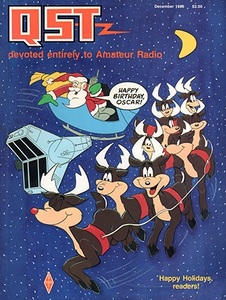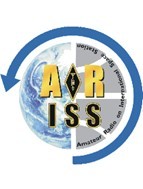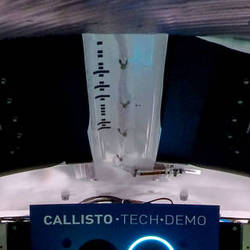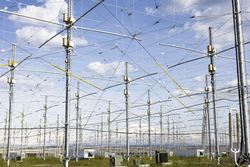 December 22, 2022 John E. Ross, KD8IDJ, Editor
| ||||||||||||||||||||||
Happy Holidays! ... from ARRL ARRL Headquarters will be closed on Monday, December 26, 2022, and Monday, January 2, 2023. There will be no W1AW bulletins or code practice transmissions on those days. ARRL HQ will reopen on Tuesday, December 27, 2022, and Tuesday, January 3, 2023, at 8 AM EST.
Rep. Lesko Introduces Bill to Replace Symbol Rate Limit with Bandwidth Limit Congresswoman Debbie Lesko (AZ-08) introduced a bill in the U.S. House of Representatives (H.R. 9664) on December 21, 2022, to require that the Federal Communications Commission (FCC) replace the current HF digital symbol rate limit with a 2.8 kHz bandwidth limit.
In conjunction with introducing the legislation, Congresswoman Lesko stated that "With advances in our modern technology, increased amounts of data can be put on the spectrum, so there is less of a need for a regulatory limit on symbol rates. I am pleased to introduce this important piece of legislation to update the FCC's rules to support the critical role amateur radio operators play and better reflect the capabilities of our modern radio technology." ARRL President Rick Roderick, K5UR, hailed introduction of the bill. Roderick stated that "the FCC's delay in removing this outdated restriction has been incomprehensible, given that the biggest effect of the delay is to require totally inefficient spectrum use on the already-crowded amateur HF bands. I hope that the Commission will act to remove this harmful limitation without waiting for the bill to be passed." ARRL Legislative Committee Chairman John Robert Stratton, N5AUS, added that "the symbol rate limit hampers experimentation and development of more efficient HF data protocols by U.S. amateurs. For all practical purposes the field has been ceded to amateurs outside the U.S., where there is no comparable limit. Removing the restriction not only will allow U.S. amateurs to use the most efficient data protocol suitable for their purpose, but it also will promote and incentivize U.S. amateurs to experiment with and develop even more efficient protocols." ARRL is the National Association for Amateur Radio®. Founded in 1914 as The American Radio Relay League, ARRL is a noncommercial organization of radio amateurs. ARRL numbers within its ranks the vast majority of active radio amateurs (or "hams") in the U.S., and has a proud history of achievement as the standard-bearer in promoting and protecting amateur radio. For more information about ARRL and amateur radio, visit www.arrl.org. Marines To Gain Radio Op Experience Via Amateur Radio
Retired Marine Corps Warrant Officer 4 Robert Cloutier, WO4ROB, and MARC President says it was a great event and he is excited to see so many new amateur radio operators. So, what drove the officers to want amateur radio licenses? Cloutier pointed out that all of the candidates already have a background in radio administration but not operating experience. Cloutier said that all new license holders were offered a free club membership but many of them will be deployed to other locations around the world and will be able to join other amateur radio clubs. He said they hope to conduct exams every three months. The Morongo Basin Amateur Radio Club is an ARRL Affiliated Club. Ugly Sweater Activation in Massachusetts The Western Massachusetts Chapter for Portable On The Air, POTA*413, recently conducted their 9th Annual Ugly Sweater Activation.
The event is held every year and known to the club members as USPOTA*413. The club welcomes this holiday, public-driven event that has the group activate a local state/national park (or SOTA summit, when possible), with several operators organized from several station setups. Hosting member Dan Vierno, K1VWQ, noted, "We normally like to have at least two stations running multi operations, like 20 and 40 meters, simultaneously. However, we have also been known to operate the event on 17, 10, 6, and 2 meters." Vierno added, "[Being] portable on the air [means] welcoming all avenues of operations that are conducted outside. Even though this year was along the beach of Hampton Ponds State Park, we have been known in the past to hold an Ugly Sweater Activation from a SOTA summit, such as W1/CR-013, Quabbin Hill." The POTA*413 club was established and began operating in 2012, while the annual Ugly Sweater Activation event was first launched in 2014 at the Mt. Tom State Reservation. The annual event has occurred outdoors every year, with the exception of 2020, during the Covid-19 pandemic, when participants of USPOTA*413 wore their ugly sweaters and chased parks and summits from home. Though it was not as much fun, they updated contacts and photos via social media. More US Schools Selected for Ham Radio Contacts with the International Space Station in 2023 Amateur Radio on the International Space Station (ARISS) has announced a list of seven schools/host organizations selected to host scheduled amateur radio contacts with the astronaut crew on the International Space Station (ISS) from July to December 2023. Earlier this year, nine schools and organizations were selected for contacts that will take place from January to June 2023 with the ISS. The primary goal of the ARISS program is to engage young people in science, technology, engineering, arts, and math (STEAM) activities that raise their awareness of space communications, radio communications, space exploration, and related areas of study and career possibilities. ARISS does this by organizing scheduled contacts via amateur radio between crew members aboard the ISS and students. Before and during these radio contacts, students, educators, parents, and communities take part in hands-on learning activities tied to space, space technologies, and amateur radio. ARISS anticipates that NASA will be able to provide scheduling opportunities for these host organizations in the US between July - December 2023:
The 16 schools and organizations selected for 2023 are now working to complete an acceptable plan that demonstrates their ability to execute a ham radio contact with the ISS. Once their equipment plan is approved by the ARISS Technical Mentors, the final selected schools/organizations will be scheduled as their availability and flexibility match up with the scheduling opportunities offered by NASA. ARISS is a cooperative venture of international amateur radio societies and the space agencies that support the ISS. In the US, participating organizations include ARRL The National Association for Amateur Radio®, and the Radio Amateur Satellite Corporation (AMSAT). Sponsors are NASA's Space Communications and Navigation program (SCaN), and the Center for the Advancement of Science in Space (CASIS). NASA "Decodes" Secret Messages Onboard the Orion Spacecraft NASA has a long history of hiding secret messages in its spacecraft and that tradition continued with the launch of the Orion crew capsule in November on top of the Artemis I rocket. Five hidden messages were placed in the Orion capsule ranging from Morse Code to musical notes. On the right side of the capsule below a window and next to the pilot's seat were the letters "C, B, A, G, F" - five musical notes for the first words in Frank Sinatra's song, "Fly Me to the Moon."
In the middle of the capsule, above the cockpit control console, was a Morse Code message that spelled out the name "Charlie" in remembrance of former Orion Deputy Program Manager Charlie Lundquist, who died in 2020. Other messages included a picture image of a cardinal to the right of the pilot seat as a tribute to former Orion Program manager, Johnson Space Center director, and St. Louis Cardinals fan Mark Geyer, who died in 2021. The other two messages were on top of the pilot's seat including Binary code representing 18. This is in honor of NASA's history of travel to the moon with the Apollo Program and to celebrate a spacecraft's return to the Moon after Apollo 17 for the Artemis Generation. The final message was in front of the pilot's seat, the country codes of each country with the European Space Agency (ESA) that participated in developing and building the spacecraft's European Service Module. Amateur Radio Operators Invited to participate in Asteroid Bounce Experiment The High-frequency Active Auroral Research Program (HAARP) will be conducting a research campaign/experiment on December 27, 2022, with transmissions between 1100 - 2300 UTC (0200 - 1400 AKST).
This experiment will reflect HAARP transmissions off of Near-Earth Asteroid (NEA) 2010 XC15, and the echo will be received by the Owens Valley Radio Observatory Long Wavelength Array (OVRO-LWA) at the California Institute of Technology (Caltech) and by the University of New Mexico's Long Wavelength Array (UNM-LWA). The target asteroid will be roughly two lunar distances away from Earth at the time of transmission. Characterizing the interior structure and composition of NEAs is critical for advancing the understanding of solar system evolution and aiding in planetary defense. Actual transmit times are highly variable based on real-time ionospheric conditions and all information is subject to change. Currently, the Asteroid Bounce (2010 XC15) experiment will take place Dec. 27, 2022, from 1100 UTC to 2300 UTC; 9.6 MHz, LFM (linear FM), 0.5 Hz WRF (waveform repetition frequency), 30 kHz bandwidth. Reports recording echo are encouraged; demodulated recordings in .wav or .mp3 are recommended. For real-time ionospheric conditions in Gakona, please consult ionograms from the HAARP Diagnostic Suite at https://haarp.gi.alaska.edu/diagnostic-suite. HAARP Give the gift of fun, community, advocacy and much more! Share the benefits of ARRL membership with a ham you know. By purchasing a gift membership this holiday season, you'll be helping a ham become more active and involved in amateur radio. They'll appreciate the many benefits that ARRL has to offer all year long - including exclusive access to ARRL periodicals, online tools and resources, and so much more! ARRL membership is the perfect gift for that special amateur radio operator on your list. To purchase a gift membership, please call 860-594-0200 and speak with a Member Services Representative (during business hours). Or reach out to ARRL Membership Manager, Yvette Vinci, KC1AIM via phone 860-594-0257 or email [email protected]. Mention code X22 and we will send the gift recipient a beautiful W1AW season's greetings card. Amateur Radio in the News ARRL Public Information Officers, Coordinators, and many other member-volunteers help keep amateur radio and ARRL in the news. "Amateur radio donation impacts local food center during time of need" / The Portager (Ohio), December 12, 2022 -- The Portage County Amateur Radio Service (PCARS) is an ARRL Affiliated Club. "Radio club recognizes members for running nightly ham system" / Houston Herald (Missouri), December 19, 2022 -- The Ozark Mountain Amateur Radio Club is an ARRL Affiliated Club. "Goderich Air Cadets speak with astronaut aboard the International Space Station" / Goderich Signal-Star (Canada), December 19, 2022 - Thanks to the 532nd Royal Air Cadet Squadron for their help in preparation for this event. Share any amateur radio media hits you spot with us. ARRL Podcasts
In the latest episode of the ARRL On the Air podcast, Ginger Wilder, KI5TJE, discusses her first time running an amateur radio net. Get ready to be the next Net Control operator for your local net. Listen to ARRL Audio News, available every Friday. ARRL Audio News is a summary of the week's top news stories in the world of amateur radio and ARRL, along with interviews and other features. The On the Air podcast is available on iTunes (iOS) and Stitcher (Android). The On the Air podcast and ARRL Audio News are also on blubrry -- On the Air | ARRL Audio News. Announcements ARRL Straight Key Night (SKN) is January 1, 2023, from 0000 UTC through 2359 UTC. In the US, SKN begins on New Year's Eve. Many hams look forward to SKN as one of the highlights of their operating year. Operators participate using Morse code (CW). All you need is your favorite straight key or bug. Many participants dust off vintage radios and keys and put them back into service each year, just for SKN. SKN is not a contest, so there's no need for quick exchanges. However, all hand keys, regardless of age, are welcome. The number of contacts you make is not important. The reward is meeting many new friends as you get together on the air. Send a list of stations contacted, SKN stories and photos, and your votes for Best Fist and Most Interesting QSO to [email protected] by January 31, 2023. More information at www.arrl.org/straight-key-night. In Brief... The Intrepid DX Group has announced the winners of the 3rd annual Youth "Dream Rig" Essay Contest. Essays were received from young amateurs from all over the world and gave interesting perspectives on how to reach out and connect with the youth of today. First Place -- Maria Polyanska, VE3OMV, and receiving an Icom IC-7300 tranceiver. Second Place -- Ryan Kocourek, N7RSK, and receiving a Yaesu FT-65R VHF/UHF handheld. Third Place -- Toby Latino, AG5ZM, and receiving a Yaesu FT-65R. Intrepid DX Group President Paul S. Ewing, N6PSE, added, "Having read your many essays this week, we can tell you that our youth are full of great ideas, and they are brimming with enthusiasm to keep our hobby alive well into the future." Ewing also thanked Robert Chortek, AA6VB, for providing the funds for this year's prizes. The K7RA Solar Update Tad Cook, K7RA, of Seattle, Washington, reports for this week's ARRL Propagation Bulletin: I am writing this, my penultimate bulletin of 2022, about seven hours after the start of Winter Solstice in the Northern Hemisphere on Wednesday December 21, 2022, at 2147 UTC. It is very cold in Seattle, about 17 degrees Fahrenheit on the longest night of the year.
Solar activity was down a bit from the previous week, although it was one of those odd occasions when average daily sunspot numbers and solar flux changed in opposite directions. Average daily sunspot number declined from 136.9 to 124.1, while solar flux rose from 150 to 153.8. Geomagnetic indicators were a bit lower, with average planetary A index changing from 7.7 to 6.7, and middle latitude numbers from 6 to 5.1. Due to missing data, I had to fudge one of the numbers (the December 16 middle latitude A index), which I pegged at 7 by eyeballing trends. Predicted solar flux appears to reach a short-term peak of 160 on January 4 - 7, 2023. Starting December 22, 2022, the forecast shows 140 and 135 through December 23; 130 on December 24 - 25; 135 on December 26 - 28; 130, 135, and 138 on December 29 - 31; 140, 150, and 155 on January 1 - 3, 2023; 160 on January 4 - 7; 158, 156, 154, 154, and 152 on January 8 - 12; 150 on January 13 - 15; 145, 130, and 120 on January 16 - 18; 118 on January 19 - 20; and 120, 125, and 127 on January 21 - 23. Predicted planetary A index is 12, 8, 5, 14, and 10 on December 22 - 26; 8, 5, 12, 10, and 12 on December 27 - 31; 8, 5, and 18 on January 1 - 3, 2023; 10 on January 4 - 5; 8, 10, and 6 on January 6 - 8; 5 on January 9 - 14; 12, 10, and 20 on January 15 - 17; 12, 8, 5, and 18 on January 18 - 21; and 20 on January 22 - 24. In Friday's bulletin look for a 6-meter report from Jon Jones, N0JK, the columnist of "The World Above 50 MHz" in QST magazine, and any other interesting observations you and others may send my way. Sunspot numbers for December 15 through 21, 2022 were 140, 108, 139, 128, 132, 119, and 103, with a mean of 124.1. The 10.7-centimeter flux was 165.9, 163.1, 154.6, 155, 6, 152.4, 146.4, and 138.7, with a mean of 153.8. Estimated planetary A indexes were 5, 9, 3, 4, 11, 6, and 9, with a mean of 6.7. Middle latitude A index was 4, 7, 2, 2, 9, 5, and 7, with a mean of 5.1. Send your tips, questions, or comments to [email protected]. A comprehensive K7RA Solar Update is posted Fridays on the ARRL website. For more information concerning radio propagation, visit the ARRL Technical Information Service, read "What the Numbers Mean..." and check out the Propagation Page of Carl Luetzelschwab, K9LA. A propagation bulletin archive is available. For customizable propagation charts, visit the VOACAP Online for Ham Radio website. Share your reports and observations. A weekly, full report is posted on ARRL News. Just Ahead in Radiosport
Visit the ARRL Contest Calendar for more events and information. Upcoming Section, State, and Division Conventions
Search the ARRL Hamfest and Convention Database to find events in your area. Have News for ARRL? Submissions for the ARRL Letter and ARRL News can be sent to [email protected]. -- John E. Ross, KD8IDJ, ARRL News Editor
ARRL -- Your One-Stop Resource for
Subscribe to...
Free of charge to ARRL members...
| ||||||||||||||||||||||

 After being petitioned by ARRL The National Association for Amateur Radio® in 2013 (RM-11708) for the same relief, in 2016 the Commission issued a Notice of Proposed Rulemaking (WT Docket No. 16-239) in which it agreed that the HF symbol rate limit was outmoded, served no purpose, and hampered experimentation. But the Commission questioned whether any bandwidth limit was needed in its place. Most amateurs, including the ARRL, objected to there being no signal bandwidth limit in the crowded HF bands given the possibility that unreasonably wide bandwidth digital protocols could be developed, and since 2016 there has been no further FCC action.
After being petitioned by ARRL The National Association for Amateur Radio® in 2013 (RM-11708) for the same relief, in 2016 the Commission issued a Notice of Proposed Rulemaking (WT Docket No. 16-239) in which it agreed that the HF symbol rate limit was outmoded, served no purpose, and hampered experimentation. But the Commission questioned whether any bandwidth limit was needed in its place. Most amateurs, including the ARRL, objected to there being no signal bandwidth limit in the crowded HF bands given the possibility that unreasonably wide bandwidth digital protocols could be developed, and since 2016 there has been no further FCC action. On Wednesday, December 7, 2022, 22 Communication Officers at the Marine Corps Communication-Electronics School (MCCES) in Twentynine Palms, California, became amateur radio operators. W6BA, the
On Wednesday, December 7, 2022, 22 Communication Officers at the Marine Corps Communication-Electronics School (MCCES) in Twentynine Palms, California, became amateur radio operators. W6BA, the photo.jpg)



-2022.jpeg)
.jpg)

-Blue.jpg)








